India Gate:
Seeming to be the renowned Arc de Triomphe in Paris, the similarly great India Gate is a grand stone curve worked as a remembrance to Indian officers killed in WWI. An everlasting fire consumes underneath the monstrous design, and its walls are engraved with the names of in excess of 90,000 fighters who passed on in the contention.
Remaining on a base of red stone and highlighting a shallow domed bowl on top that is at times loaded up with consuming oil (typically just on significant commemorations), the construction overwhelms the parkland around it, a consistently bustling region with hordes of vacationers and local people the same partaking in a cookout or essentially unwinding.
For great, attempt to see the India Gate around evening time, thought about one of the top free activities in New Delhi. It’s a fabulous sight when it and close by wellsprings are floodlit.
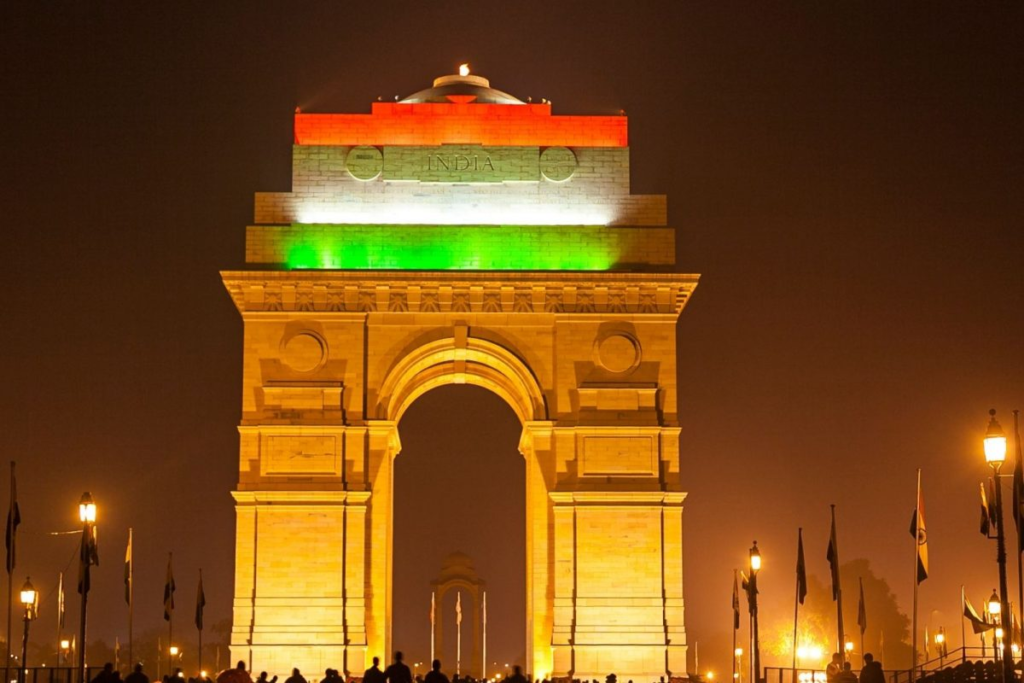
The Red Fort:
The delightful Red Fort (Lal Qila) was worked by Shah Jahan in 1648 and filled in as the seat of Mughal power until 1857. This dazzling construction, with its tall, red sandstone walls covers an area of in excess of two square kilometers, the whole of which is sickle formed and encircled by a channel.
The great primary entry, the Lahore Gate, is so named as it faces towards Lahore in Pakistan, while the significantly more excellent Delhi Gate was involved by the head for stately parades. Entering through the Lahore Gate, guests arrive at Chhatta Chowk, a seventeenth century covered market where things like silks, gems, diamonds, and flatware can be bought, alongside keepsakes and food things.
The Naubat Khana inside the Red Fort once housed the artists who played for the sovereign, its fine exhibitions actually contain many intriguing instruments like kettledrums, gongs, and cymbals. Diwan-I’m, the Hall of Public Audiences, where the sovereign would accept his subjects, is additionally worth seeing for its staggering white marble.
An extraordinary method for seeing the Red Fort and other well known Delhi attractions is by booking a confidential entire day visit through Old and New Delhi. Features of this nine-hour metropolitan experience incorporate an individual expert aide and driver who’ll take you to such focal points as Humayun’s Tomb, Qutub Minar, as well as Jama Masjid, India Gate, and the renowned Lotus Temple. Included with your visit are inn pickup and a ride in a rickshaw.

Lodi Gardens:
One of the most famous New Delhi parks among local people, the 90-section of land Lodi Gardens is definitely worth remembering for your Delhi agenda. Notwithstanding its rich gardens, the recreation area contains various relics from the Lodi time frame pre-1600s, including different significant burial places and destroys.
Engineering features incorporate fifteenth century tombs containing the remaining parts of the Lodi Sultans, as well as a pleasant triple-domed mosque, the Glazed Dome, known for its blue tiles, and the remnants of an enormous vault dating from around 1490. Make certain to likewise search for the Athpula, an eight-wharf span dating from the sixteenth hundred years with alluring segments and curves range the recreation area’s lake.
Lodi Gardens is likewise known for its widely varied vegetation, including in excess of 100 types of local trees, 50 types of butterflies, and a lot of birdlife. It’s likewise home to the country’s National Bonsai Park.
While nearby, require the short five-minute stroll to the famous Khan Market. This clamoring (and extremely protected) region truth be told positions among the world’s most lofty shopping areas, with extravagance brands hobnobbing with road merchants selling nearby delights.
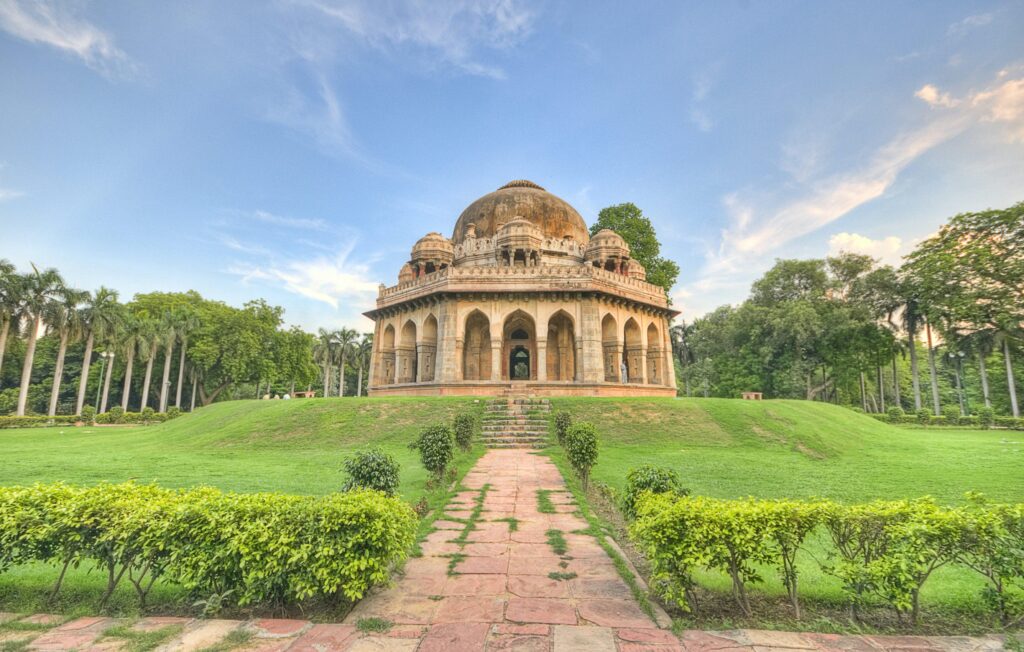
Purana Qila (The Old Fort):
Although often overlooked, as most vacationers go directly toward the more popular Red Fort, Purana Qila (Old Fort) is definitely worth fitting into your Delhi travel agenda. Flaunting a previous that stretches back nearly 2,500 years, a large part of the ongoing great building traces all the way back to the 1500s, in spite of the fact that proof of prior structures tracing all the way back to the 3rdcentury have been found.
The current design assumed a significant part in the locale’s undertakings for a really long time and was especially impacted by the Muslim religion, as confirmed by building’s, for example, the Qila-I-Kuna Mosque, a solitary vault spot of love worked in 1541. The site covers an area of two square kilometers, and you’ll appreciate investigating its thick bulwarks and three enormous doors, a particularly noteworthy sight during the daily enlightenments.
The 200-section of land Mehrauli Archeological Park is likewise deserving of a visit and highlights various significant designs, some of which date back over 1,000 years. Features incorporate the old remains of Lal Kot, alongside later proof of occupation by the British during the rule of Queen Victoria.

Humayun’s Tomb:
Set in an exquisite, huge square nursery, Humayun’s Tomb is a grandiose sepulcher built of white marble and red sandstone. It was planned as a model of the Taj Mahal in Agra and is a magnificent illustration of Mughal design.
Underlying the mid-sixteenth 100 years by Haji Begum as a commemoration to her better half by Humayun’s senior widow, the burial place is encircled by rich proper nurseries and different burial chambers including Humayun’s hairdresser and the Tomb of Isa Khan (the modeler of the Taj Mahal), a fine illustration of Lodi engineering and octagonal in shape.
Something great to do is to attempt to get a brief look at this stupendous construction after dusk when it’s enlightened.
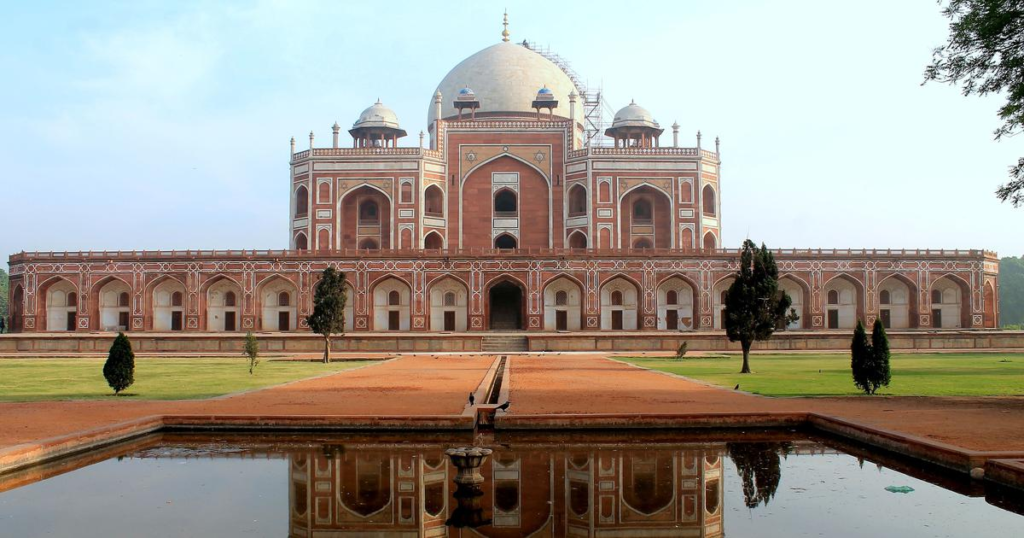
Qutub Minar:
Finished in the twelfth hundred years, the wonderful Qutub Minar is India’s tallest minaret. It’s likewise now an UNESCO Word Heritage Site that draws in numerous global guests anxious to move to the top for its stunning perspectives on the encompassing region.
This elaborate five-story tower rises in excess of 70 meters and is covered with mind boggling carvings highlighting the historical backdrop of Qutub alongside engravings from the Koran. It’s likewise eminent for being developed of various kinds of stone (the initial three stories are made of red sandstone, while the fourth and fifth stories were worked with marble and sandstone).
The complex likewise incorporates the Quwwat-ul-Islam Masjid, a mosque at the foundation of the pinnacle; an entryway worked in 1310; and the burial chambers of Altamish, Alauddin Khalji, and Imam Zamin. Additionally worth seeing is the 2,000-year-old Iron Pillar, the Alai Minar.
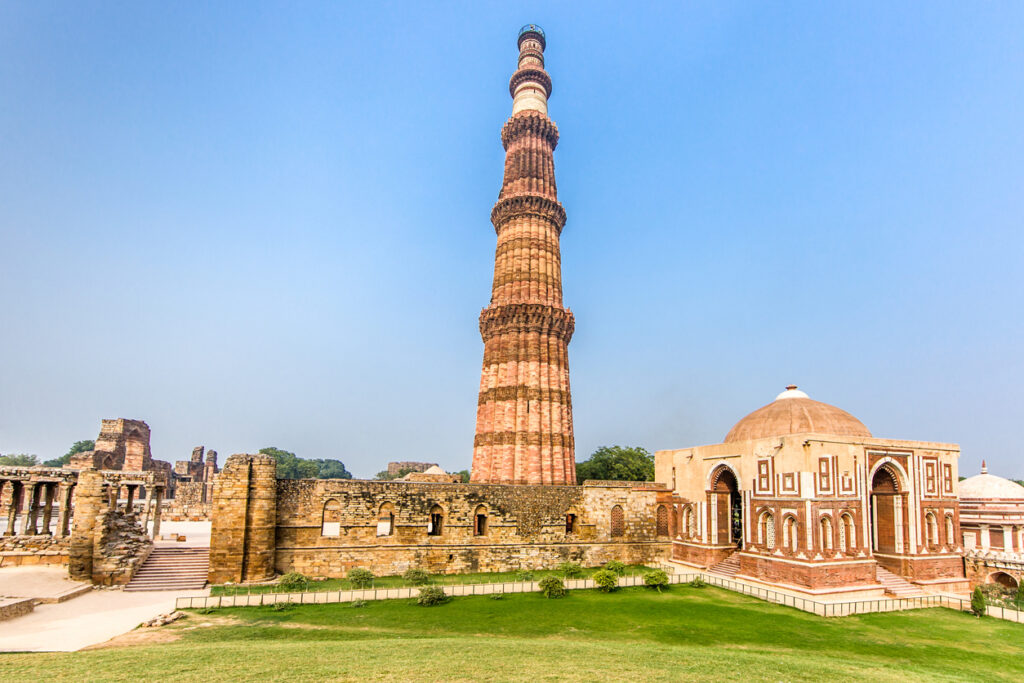
Gurudwara Bangla Sahib:
Delhi’s most significant Sikh spot of love, the eighteenth century Gurdwara Bangla Sahib is situated close to Connaught Place and is definitely worth a visit. Features incorporate its superb pool, the Sarovar, at the core of this huge complex, as well as its renowned gold vault and flagpole.
Likewise important is the enormous sanctuary building itself, alongside its specialty exhibition and a little historical center devoted to the historical backdrop of the Sikh religion. Guests are generally wanted here, and an amazing feast is accessible at no expense in the enormous Gurdwara Kitchen. All that is asked in kind is your hair be covered and shoes eliminated (free headscarves and shoe stockpiling are given).
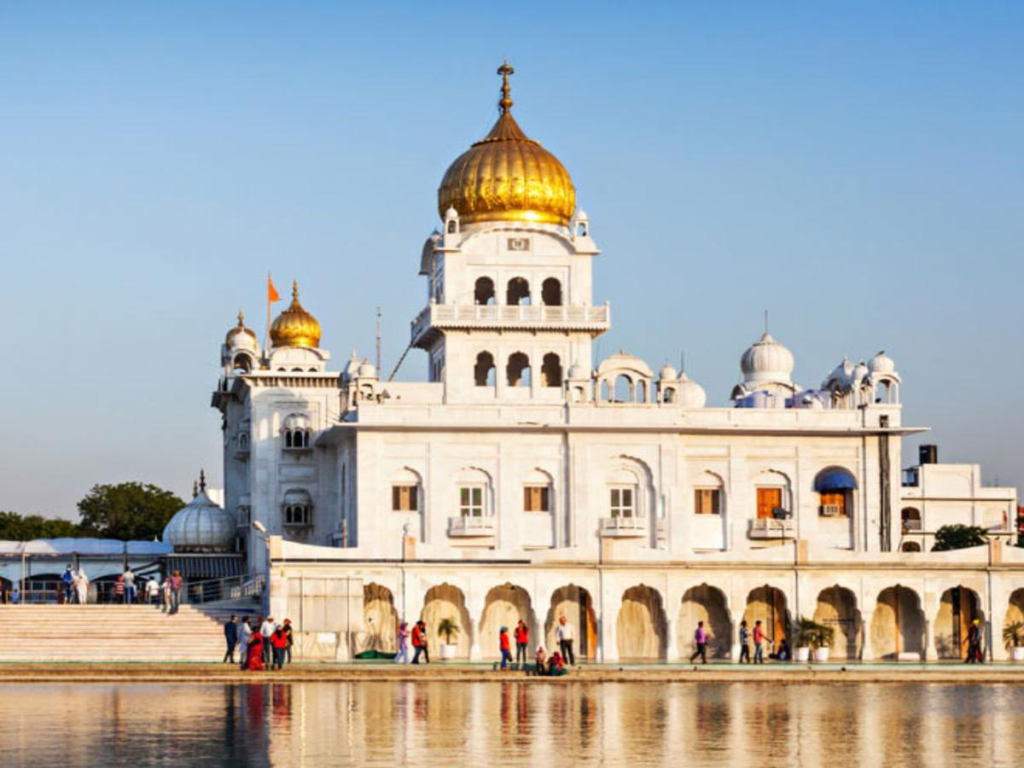
Jama Masjid:
The Jama Masjid is quite possibly of India’s biggest mosque and was the last engineering accomplishment of Shah Jahan. Finished in 1658, this delightful design highlights three doors, four calculated pinnacles, and two 40-meter-high minarets assembled utilizing red sandstone and white marble and alluringly exchanged in vertical stripes.
Guests can move to the highest point of the southern minaret for stupendous perspectives on Old Delhi, and a short time later visit the huge focal pool utilized for washing before petitions. If it’s not too much trouble, note: guests should remove their shoes and be fittingly dressed prior to entering; non-Muslims aren’t allowed during supplications.
Thereafter, make certain to visit Chandni Chowk, Old Delhi’s gigantic primary lane and a market region committed to shopping and eating. Quite compelling are Naya Bazaar and Gadodial, renowned flavor markets where you’ll see many things shown including aniseed, ginger, pomegranate, saffron, lotus seeds, pickles, and chutneys.

The Lotus Temple:
The radiant Bahá’í House of Worship, otherwise called the Lotus Temple because of its nine sides and staggering focal vault, is a compositional magnum opus. Developed of white cement and marble, the whole construction looks as sensitive as the blossom it looks like. Ascending from the encompassing nine pools of water, it nearly shows up as though it could burst into blossom all of a sudden.
Underlying 1986, the sanctuary has since drawn in excess of 70 million guests, making it one of the world’s most visited attractions. Curiously, this astounding spot of love has no icons, strict pictures, or outward images of religion.
One more current sanctuary deserving of a visit is the ISKCON Temple, one of the country’s greatest Krishna sanctuary edifices.
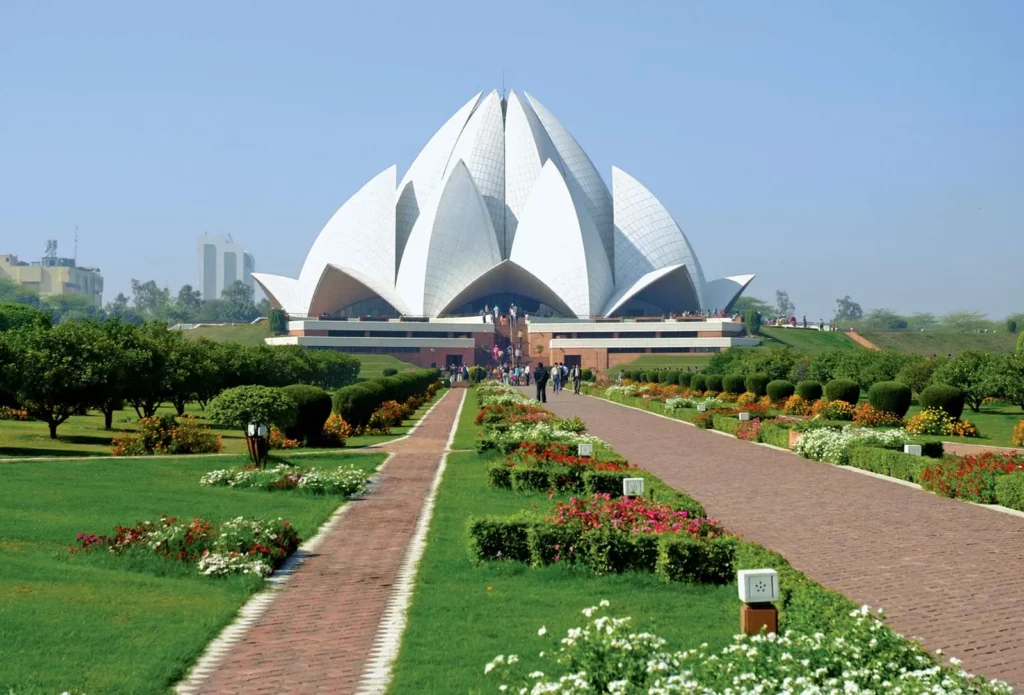
Akshardham:
Albeit as of late finished (it opened in 2007), the magnificent Hindu Akshardham sanctuary seems as though it very well may be exceptionally old. Decorated with unpredictable and elaborate carvings, this glorious structure draws in endless guests for its lofty magnificence.
Features incorporate the dazzling 43-meter-high fundamental landmark with its rich carvings of creatures, plants, divine beings, artists, and performers, all produced using pink sandstone and marble. Of specific note are the 234 elaborate support points supporting its nine vaults, as well as a dazzling stone recognition for elephants, the highlight of which is a huge 3,000-ton sculpture of one of these monsters.
Different elements of interest incorporate a performance center appearance a film following the structure’s development, a great 15-minute boat ride portraying India’s rich history and various culture, and the staggering Yagnapurush Kund, an enormous melodic wellspring that is a specific treat when illuminated around evening time.











